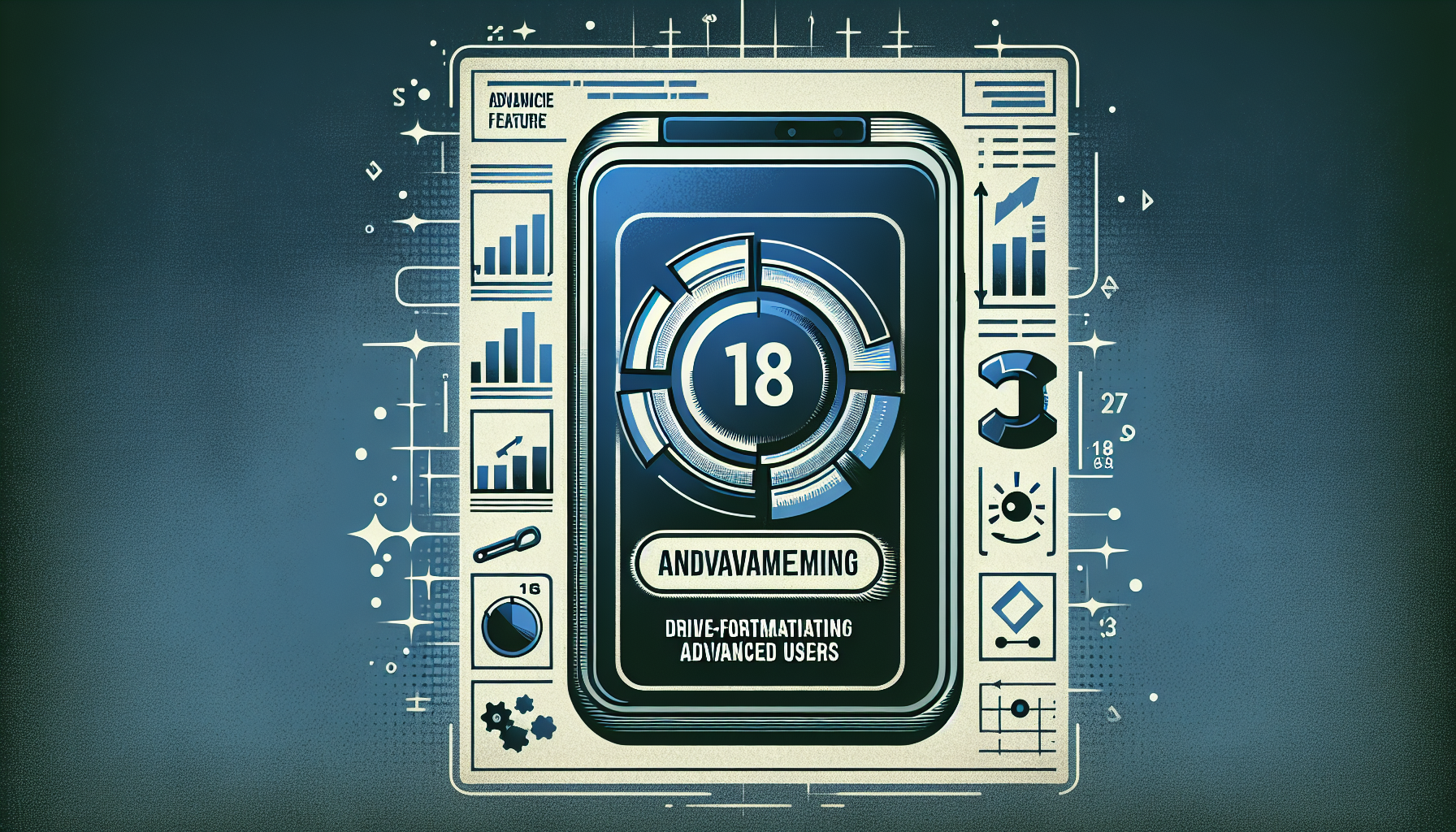 ## iOS 18 Features Drive-Formatting Capability, Showcasing iPhone’s Growth for Advanced Users
## iOS 18 Features Drive-Formatting Capability, Showcasing iPhone’s Growth for Advanced Users
Apple continues to expand the potential of its mobile devices with the introduction of a drive-formatting feature in iOS 18 and iPadOS 18. Uncovered in the beta versions of these updates, this functionality marks a notable change in Apple’s mobile operating system strategy. Let’s explore its significance for advanced users and the broader trends it represents within Apple’s ecosystem.
The New Drive-Formatting Capability
What It Is and How It Operates
With iOS 18 and iPadOS 18, users can now format external drives directly through their iPhones and iPads. This feature, identified by artist and developer Kaleb Cadle, reveals that the Files app now offers an “erase” option for external drives. Users have three formatting choices: APFS (including variants that are case-sensitive and encrypted), ExFat, and MS-DOS (FAT).
Previously, such functions were restricted to Disk Utility on a Mac. This new ability introduces a level of desktop-like file management to mobile devices, a vast leap from the time when iPhones and iPads lacked any file system access.
The Progression of File Management on iOS
From No File System to Advanced Management
Initially, the iPhone was designed as a closed system with no file system access, a choice by Apple to simplify user experience and bolster security. However, as user requirements evolved, so did iOS capabilities.
The advent of the Files app was a pivotal moment, enabling users to access and manage files on their devices and in the cloud. The addition of drive-formatting features marks another progression toward making iOS devices more capable and robust.
Implications for Advanced Users
Bridging Mobile and Desktop Gaps
The ability to format external drives on an iPhone or iPad is transformative for advanced users needing sophisticated file management. This feature minimizes the necessity for a Mac, enhancing mobile device autonomy.
Advanced users have long desired more functionality from their mobile devices, and Apple is gradually responding. Such features underscore Apple’s dedication to satisfying the needs of its most demanding users.
The Future of iOS and iPadOS
What’s Ahead for Apple’s Mobile Operating Systems?
The drive-formatting capability in iOS 18 and iPadOS 18 indicates Apple’s readiness to blend its mobile and desktop operating systems. While some Disk Utility functionalities like Restore and First Aid are still absent, it’s evident Apple is advancing towards a more comprehensive toolset on its mobile platforms.
As Apple persists in its innovation, we can anticipate even more desktop-like features integrating into iOS and iPadOS, further augmenting these devices’ versatility and power.
Conclusion
The introduction of drive-formatting features in iOS 18 and iPadOS 18 is a major advancement in the evolution of Apple’s mobile operating systems. This capability not only enriches the functionality of iPhones and iPads but also demonstrates Apple’s commitment to serving power users’ needs. As innovation continues, we can expect even more advanced features that narrow the gap between mobile and desktop computing.
Q&A Session
What is the new drive-formatting feature in iOS 18?
The new drive-formatting feature in iOS 18 enables users to format external drives directly on their iPhones and iPads using the Files app, offering APFS (with case-sensitive and encrypted options), ExFat, and MS-DOS (FAT) formats.
How does this feature benefit advanced users?
This feature aids advanced users by offering sophisticated file management directly on their mobile devices, decreasing the dependence on a Mac for such tasks.
What were the prior limitations regarding file management on iOS devices?
Previously, iOS devices did not grant access to any file systems, and tasks like formatting external drives required using Disk Utility on a Mac.
What features are still missing from Disk Utility on iOS?
Features like Restore and First Aid are still absent from Disk Utility on iOS. However, the addition of drive-formatting capabilities hints that more features may be introduced in future updates.
How does this feature reflect Apple’s broader strategy?
This feature signifies Apple’s broader strategy to make its mobile devices more versatile and powerful, blurring the lines between mobile and desktop computing.
What can we expect from future updates to iOS and iPadOS?
We can expect future updates to bring more desktop-like features, further enhancing the functionality and versatility of iPhones and iPads.